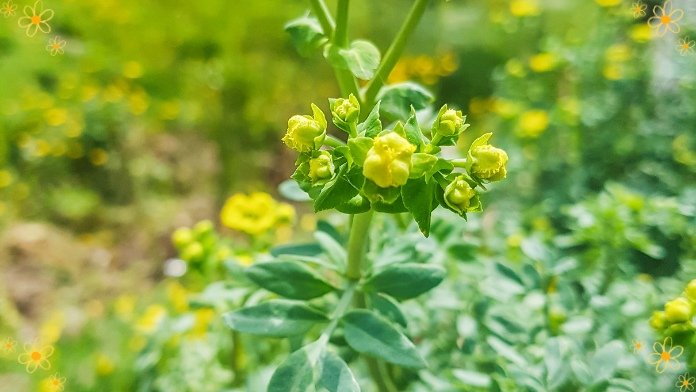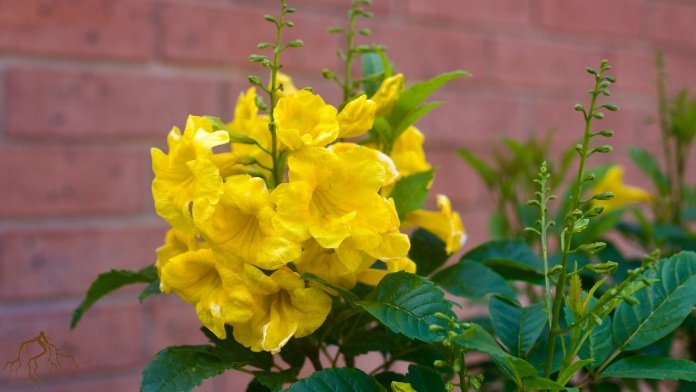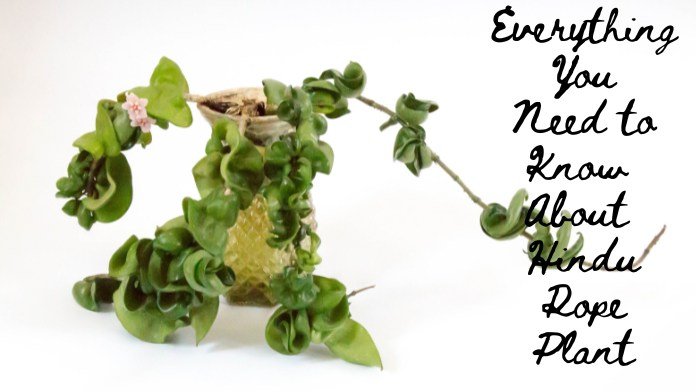
Do you know what the ruda plant is in English? Why is it significant? The rue plant stands out when it comes to unique plants with a rich history and versatile uses. Ruta graveolens, commonly known as rue, common rue, or herb of grace, is a species of the genus Ruta cultivated as an ornamental plant and herb. It is native to the Balkan Peninsula. It is grown in gardens worldwide, especially for its bluish leaves and sometimes to tolerate hot, dry soil conditions. Let’s explore the curious world of the Rua plant and discover its many facets.
What is the Ruda plant?
The Ruda plant, scientifically known as Ruta graveolens, is a perennial herb belonging to the Rutaceae family. Cotton is a plant. The parts that grow above the ground are used to make medicine. Be careful not to confuse rue with goat rue (Galega officinalis) and prairie rue (Thalictrum species). Originally from the Mediterranean region, it has been used for centuries in various cultures for its medicinal, culinary, and spiritual properties. Often called rue in English, this plant has small yellow flowers and a strong, pungent aroma.
Importance of Ruda Plant
Throughout history, the rue plant has played a prominent role in many cultures. In ancient Greece and Rome, it was considered a powerful medicinal herb. The Greeks used it to treat various ailments, while the Romans believed it could ward off evil spirits—insufficient evidence to qualify its efficacy.
- Menstrual disorders.
- Indigestion, heartbeat, nervousness.
- Fever.
- diarrhea, shortness of breath
- Multiple Sclerosis (MS).
- Bell’s palsy.
- Arthritis.
- sprain
- ear pain, toothache
- Warts.
- headache
Properties of Ruda Plant
The rue plant is easily recognized by its blue-green leaves and clusters of small yellow flowers. It is usually about two feet tall and bushy.
Growth Rate: Fast
Mature height: 7-10 feet.
Mature width: 2-3 feet.
Sunlight: Grows in full sun and tolerates shade.
Foliage Flowers: White, feathery flowers from mid-summer to early fall.
Use: Suitable for planting in a pot or on the ground.
Properties: Container plant, herb
Soil condition: Rich organic mixture with good drainage.
What is this Used for?
In traditional healing practice, rue tea has been used to increase menstruation, against high blood pressure, and to treat hysteria. Crushed cotton leaves are placed in the ear canal to relieve pain and headaches.
Externally, rue is applied as a skin antiseptic and insect repellent and a poultice against rheumatic pains. Due to its toxicity, the use of this plant is now considered obsolete by modern scientific herbalism (phytotherapy).
Medicinal Uses of the Ruda plant
Traditionally, the rue plant has been used to treat various health problems. It is known for its anti-inflammatory, antifungal, and antimicrobial properties.
Modern research has proven some of its beneficial properties. This article will explore the benefits of the medicinal plant rue and its uses in different cultures and traditions.
- Anti-Inflammatory Properties Rue has been found to have anti-inflammatory properties that make it helpful in treating various inflammatory conditions. Anecdotal evidence suggests that rue may help reduce inflammation associated with arthritis, rheumatism, gout, and other conditions. It does this by inhibiting the production of cytokines, which are proteins that cause inflammation in the body.
- Antispasmodic Properties Rue has antispasmodic properties that relax the body’s smooth muscles. It can help treat conditions like asthma, cough, and menstrual cramps. Rhubarb has also been used to treat digestive problems such as flatulence, gastritis, and bloating.
- Several compounds have antimicrobial properties, including rutin, flavonoids, and furocoumarins. These compounds make rue an effective natural remedy for various bacterial infections. It treats ringworm, skin infections, intestinal worms, and respiratory infections.
- Pain Relief Rue is also known for its analgesic properties. It has traditionally been used to treat headaches, neuralgia, and toothache. Rye contains a compound called rutin, which is known to inhibit the production of prostaglandins, which may be responsible for causing pain.
Ruda Plant in Culinary Uses
Although it is not as well known, Ruda also has a place in the culinary world. In some cultures, the leaves are used in small amounts to flavor foods and beverages.
It has other culinary uses:
- It was widely used in Roman and ancient Near Eastern cuisine (according to Ibn Sayr al-Warraq and Apicius).
- Rye is used as a traditional flavoring in Greece and other Mediterranean countries.
- In Istria (a region surrounding Croatia and Slovenia) and Northern Italy, grappa/raki has a unique flavor, and a small sprig of the plant is often found in the bottle. It is called Grappa Alla Ruta.
- The seeds can be used to make dol.
- Bitter leaves can be added to eggs, cheese, and fish or mixed with prunes and wine to make meat sauces.
- In Italy, in Friuli-Venezia Giulia, tender branches of the tree are dipped in a batter, fried in oil, and eaten with salt or sugar. They are used alone to flavor a specific type of tortilla.
- They are used as a flavoring ingredient in Old World beer.
Spiritual and Magical Uses of Ruda Plants
The spiritual meaning of the rue plant is immense. It is believed to have protective properties and is used in rituals to ward off evil spirits and negative energy.
Many people use Ruda to clear spaces and promote positive vibes. Some also carry it as an amulet of protection and luck. The plant’s association with magic and spirituality is a testament to its enduring cultural importance.
5 Ways to Use Ruda in Your Spiritual Practice
Home Cleansing: When spiritually cleansing your home, consider adding rue water to your ingredient list to purify your space or remove negative vibrations.
It is an excellent addition to any water mop or cleaning mix for windows, window frames, wall panels, door handles, and more in your home, car, or office. It’s a great way to refresh your space after having guests over or to coincide with the moon and seasonal cycles.
Cleansing Spiritual Tools: Although rue water can be considered a spiritual tool, it is also great for cleaning other spiritual tools such as amulets, tarot cards, and even altars.
Spray a little on a cloth and clean your tools while you admire the magical herb. To refresh altars, you can clean them and sprinkle some rui water to create a protective energy shield.
Strengthen your aura: Add rue water to a small spray bottle and spray it around you to create a powerful shield of protection. It’s also great for enhancing glow.
Promote self-love: This powerful herb is excellent for promoting self-love and love, whether you sprinkle some in your bath or cleanse or use rue water as a mist.
You can spray it on your hands and inhale gently before wiping your body from head to toe.
How to Grow Ruda Plants
The rue plant, commonly known as rue or herb of grace, is a species of Ruta graveolens, cultivated as an ornamental plant and herb.
It is grown in gardens worldwide, especially for its bluish leaves and sometimes to tolerate hot, dry soil conditions.
Growing your rue plant can be a rewarding experience:
Here is a simple guide:
Soil and Climate: Ruda likes well-drained soil and lots of sunlight. It grows in warm climates but can tolerate some cold.
Planting: Start seeds indoors in early spring. When the seedlings are strong enough, transplant them outside, spacing them about a foot apart.
Watering: Keep the soil moist but not waterlogged. Water regularly, especially during dry periods.
Fertilization: Use a balanced fertilizer every few weeks during the growing season for healthy growth.
Caring for the Ruda Plant
Proper care ensures that your cotton plant stays healthy and vibrant:
Watering: Regular watering is essential, but excess watering should be avoided. Allow the soil to dry out between waterings.
Fertilization: Apply a balanced fertilizer every month during the growing season.
Pests and Diseases: Beware of common pests like aphids and spider mites. Treat any infestation quickly with organic insecticides.
Rue Harvest and storage
Harvesting rue at the right time is crucial to maintaining its potency. The best time to harvest is in the morning after the dew has dried but before the sun is too intense.
Cut stems and hang them upside down in a cool, dry place to dry. Once dry, store the leaves in an airtight container away from direct sunlight.
Safety and Precautions
Although rue has many benefits, it is essential to use it safely. Some people may experience skin irritation or allergic reactions.
Safety Precautions:
- Please do not use it internally during pregnancy or lactation. Active ingredients in rue are toxic to the fetus or fetus.
- Some people have used this herb to terminate unwanted pregnancies, but this is a hazardous practice that can lead to the death of both mother and child.
- Please do not use it internally with young children or older people.
- Do not use in patients with heart or kidney disease.
- Rui applied to the skin can cause severe photodermatitis (if skin treated with this herb is exposed to direct sunlight), as well as contact dermatitis in people sensitive to the plant.
- Do not take rue with blood pressure-lowering medications, as it may increase their effects.
Side Effects
Rue is considered safe when consumed in dietary amounts. It is unsafe when used as medicine. When taken orally, it can cause side effects such as stomach irritation, mood changes, sleep problems, dizziness, seizures, severe kidney and liver damage, and death. When applied to the skin, it may cause a rash and increased sensitivity to the sun.
Compare Ruda with Similar Plants.
Rhubarb is often compared to other medicinal herbs such as basil and thyme. Although they share some similarities in their uses, rue’s unique aroma and strong properties set it apart.
Unlike many herbs, rue leaves have a more robust, intense flavor, which requires careful handling in culinary applications.
FAQ
What is the Ruda Plant Known For?
The rue plant, also known as rue, is used for its medicinal, culinary, and spiritual purposes. It is valued for its anti-inflammatory and antimicrobial properties and is used in various protective rituals.
Can Ruda Be Used for Cooking?
Yes, rue can be used in cooking, although sparingly due to its strong smell. It is commonly used in Ethiopian cuisine, especially in the traditional honey wine called Tij.
How Do You Care for a Ruda plant?
Rye plants prefer well-drained soil and lots of sunlight. Regular watering and monthly fertilization are essential during the growing season. Beware of pests like aphids and spider mites.
Is Rue Plant Safe to Use?
Some people may experience skin irritation or allergic reactions. Consult a healthcare professional before using it for medicinal purposes, especially if you are pregnant or have certain health conditions.
Where can I buy Ruda Seeds?
Ruda plant seeds are available at many garden centers, online retailers, and specialty herb stores. Make sure you buy from a trusted source for high-quality seeds.
What is Another Name for the Ruda Plant?
Other Names: Common rue, garden rue, German rue, herb-of-grace, herbe à la belle-fil, herbe de grace, herbe de repentance, herbe de la rue, herbgrass, rue, rue, rue de castilla, rue fetide , Rue des Jardins, Rue Officinale, Rue Puante, Ruta Grav, Ruta graveolens, Rutae Folium, Rutae Herba, Sudapa.
RELATED POSTS
View all


